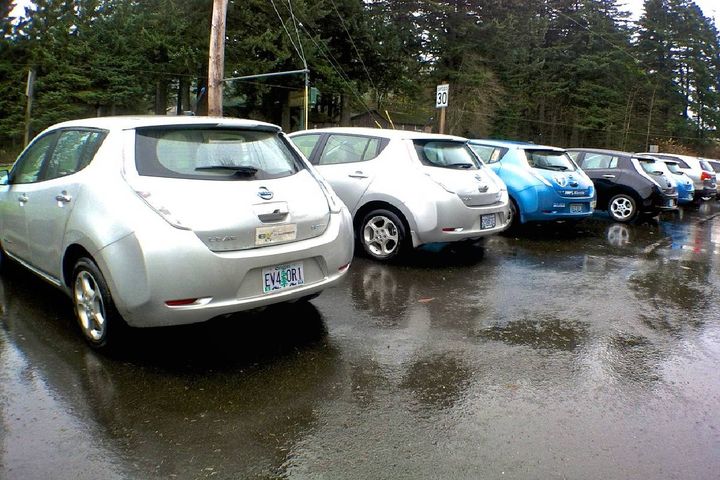Photo: “Electric vehicles” by OregonDOT is licensed under CC BY 2.0
As soon as a company or fleet managers start thinking about adopting electric vehicles, they should start talking with their utility provider.
Known as vehicle-to-grid technology (V2G), the involvement of a local utility can bring a lot of potential for more efficient fleet operations.
What are some key tips or pieces of advice that all fleet operators should remember when partnering with an energy company on running electric vehicles, charging, and V2G?
It is important to work with your partners early on to ensure success throughout the process, from manufacturing to operation. Mark Childers, powertrain and technology sales manager for Thomas Built Buses, shares some key advice on integrating your fleets with power companies.
- Start the conversation early. As soon as a company or fleet managers start thinking about adopting electric vehicles, they should start talking with their utility provider. Deploying new EVs can involve a prolonged timeline, so communicating early on will help the process move more smoothly and minimize unexpected hurdles. Involve your local dealer, too. They can add value to the discussion by providing specific vehicle options.
- Invite the utility provider to a site review. A utility provider can assess what electrical infrastructure is already in place as well as what may need to be added to charge a fleet. While on site, fleet managers and the utility provider should also discuss fleet operations, such as how vehicles are parked and whether there are islands for charging multiples vehicles at a time. The utility provider can also offer suggestions on security around the charging infrastructure for safety purposes.
- Discuss rates. There are two different rate structures that the transportation director and utility provider need to discuss: those based on time-of-use (TOU) and demand charge structures. TOU rate structures refer to the varying rates that a utility provider will charge for electricity depending on the time of day and whether it is peak-use time or not. Charging at varying times of day can greatly affect utility costs. Demand charge structures refer to additional fees that may be charged based on the highest amount of power drawn during an interval of time within the billing cycle. Knowing the cost of your electricity (fuel) is paramount to success in running electric vehicles.
- Settle on electric vehicle (EV) support equipment — also known as charging equipment.
Together, the fleet manager and utility provider should discuss the best charging infrastructure for the fleet, whether AC or DC charging. How a fleet operates, whether on fixed routes, set schedules and/or established service hours, will play a critical role in the selection of chargers. Also think about the future growth of EVs in your fleet. Consider charging redundancy, such as a contingency plan if chargers are out of commission. - Look into financial assistance and grants. Some utility providers can invest in some or all of the infrastructure costs, so budgeting and financing assistance should also be part of the conversation. Do your homework up front and look for make-ready EV programs from your utility provider.
Originally posted on Charged Fleet
Source: https://www.automotive-fleet.com
CUT COTS OF THE FLEET WITH OUR AUDIT PROGRAM
The audit is a key tool to know the overall status and provide the analysis, the assessment, the advice, the suggestions and the actions to take in order to cut costs and increase the efficiency and efficacy of the fleet. We propose the following fleet management audit.




